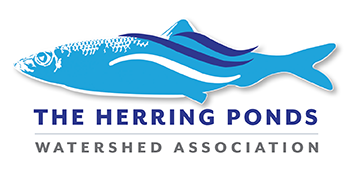The WATER QUALITY REPORT – Where We Have Been and Where We Are
By Brian Harrington, Past President
In 2021 the Town of Plymouth, working with a consultant, and with support from the HPWA,
launched a comprehensive water quality study of Great Herring and Little Herring Ponds. The
purpose of the study was to understand possible sources of excess phosphorus in the
watershed that had been identified during a 2015 study of water quality in a number of
Plymouth ponds. In that 2015 report (“PPALS Report”), Great and Little Herring Ponds were
identified as “impaired”, largely because of high phosphorus levels.
Discussions between the HPWA and the Town Department of Marine and Environmental Affairs
(DMEA) led to a preliminary strategy that would culminate with a watershed management plan
that would reduce phosphorus levels. In 2018 or early 2019 the Town DEM had written grant
proposals and had pledged much of the funding needed for the project. The Town later (2020)
voted a match, and HPWA pledged $10,000 (which it raised from its membership) towards the
anticipated costs.
The initial tasks outlined for the plan were: a) collect, review, and synthesize the available data
within the two ponds [HPWA had been collecting data for more than 5 years], b) complete a
watershed delineation and use existing land use and water information to develop initial water,
nitrogen, and phosphorus budgets for each pond, c) complete stormwater runoff sampling of 7
key sites, and d) identify data gaps and recommendations for next steps.
In 2019 a proposal for a more detailed study of Great and Little Herring Ponds were solicited by
the Town, and the funding of a contract was expanded. The contract was signed on December
4, 2020, after approval by Town Meeting on October 17, 2020.
The reason for going into all this detail is to make it clear that the “trigger” for the study was a
deliberate process prompted by the 2015 PPALS study which showed elevated phosphorus
levels. In view of the cyanobacteria developments in 2020, this was “serendipitously brilliant”
timing, but notwithstanding, the design of the project was never to “validate the causes of the
cyano blooms”. This may seem like quibbling, but I feel that it is important to know that this
has been a slow and deliberate process begun in 2015, a process where HPWA has been a
willing partner with the Town DMEA.
In late August 2022, the contracted consultants provided the draft of their findings to the Town
and HPWA. These findings have undergone a rigorous review by HPWA and the Town and
additional experts. This review is a continuing part of a process that we hope will lead to
identifying the most practical measures that can be used to reduce phosphorus levels in the
watershed. The Town DMEA has included HPWA (through a board-appointed committee) in this
review process. All this is part of a deliberate process that we all hope will help end with reduced
phosphorus levels in the Watershed; this necessarily is a slow process, each step requiring careful
planning, fund-raising, and ongoing review and evaluation. It isn’t, and can’t be, speedy.
I hope that all this will give insights as to why the Water Quality Plan was conceived and why it
is taking a long time to reach an endpoint. Hopefully, what we will learn will be applied to
reducing watershed phosphate levels, which in turn should lead to reduced likelihood of
cyanobacteria blooms, other algal blooms, and a safe and healthier watershed ecosystem.

Comments
The WATER QUALITY REPORT – Where We Have Been and Where We Are — No Comments
HTML tags allowed in your comment: <a href="" title=""> <abbr title=""> <acronym title=""> <b> <blockquote cite=""> <cite> <code> <del datetime=""> <em> <i> <q cite=""> <s> <strike> <strong>